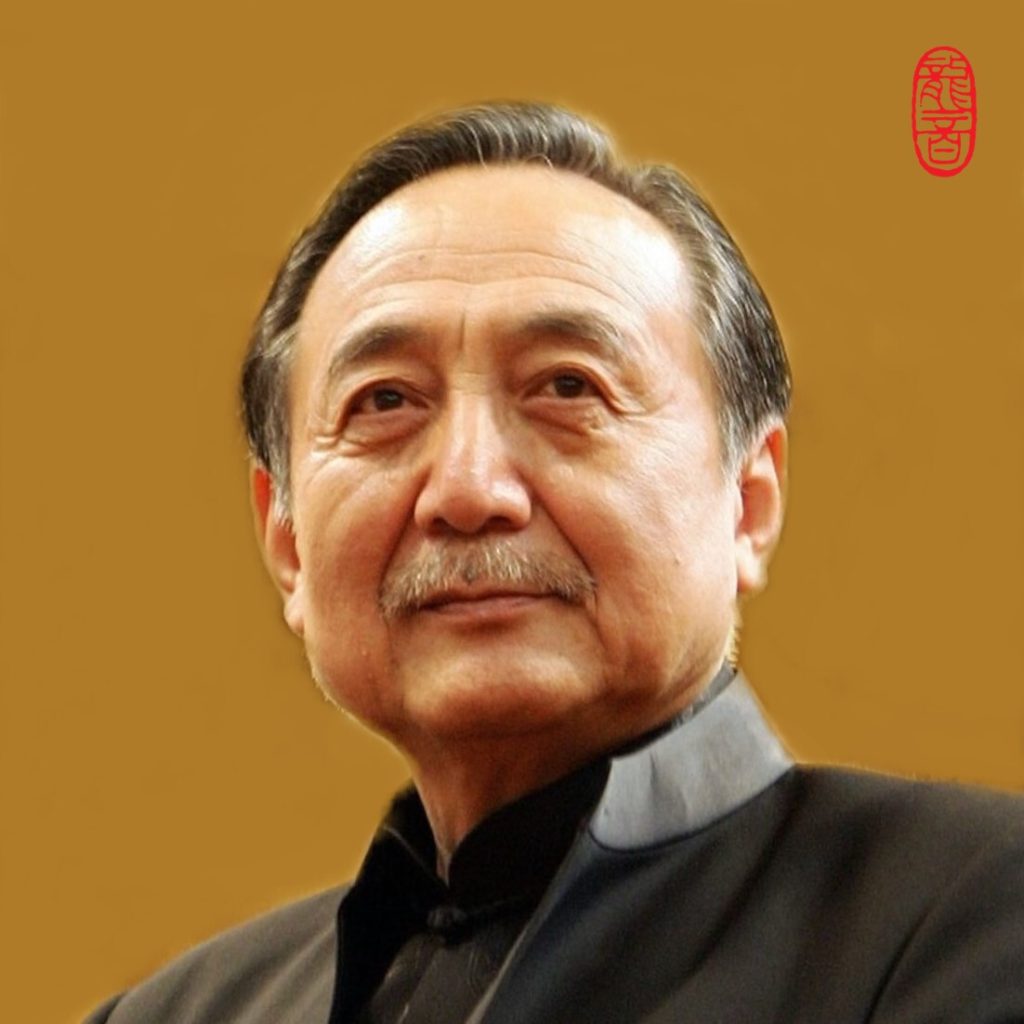
A0008 關迺忠 KUAN Nai-chung (1939年3月2日~)
關迺忠,指揮家、作曲家,曾任東方歌舞團指揮、中國藝術團駐團作曲家、北京藝術團及中國歌舞團指揮、香港中樂團音樂總監、台灣高雄市國樂團指揮、中國音樂學院華夏民族樂團指揮。滿族人,1939年3月2日,出生於北京;1950年至1956年就讀於北京市第四中學;1956年考進中央音樂學院作曲系;1961年,畢業後被分配到北京東方歌舞團,做指揮和作曲工作;1979年,移民香港;1986年至1990年,出任香港中樂團第二任音樂總監;1990年,移民台灣,並擔任高雄市國樂團指揮;1994年,移民加拿大,音樂創作高產量且多元化。關氏曾與中國中央樂團、中央廣播交響樂團、中央芭蕾舞團交響樂隊、中央民族樂團、中央廣播民族樂團、中央廣播合唱團、上海民族樂團、香港小交響樂團、台灣聯合實驗管絃樂團、台灣省交響樂團、台北市立國樂團、台灣國家實驗國樂團、新加坡華樂團、澳門中樂團等合作演出。關氏主要作品包括交響樂四部、各種樂器之協奏曲二十首、大型樂隊作品十五首、舞劇三部、交響大合唱三部、中小型樂隊作品、古典及民間樂曲之改編曲、舞蹈音樂及電影音樂及歌曲等超過百首。早期作品多寫實和富民族風格,中期則探索樂曲形式和樂隊色彩的變化,其後又轉向追求純音樂的表現。近年主要作品有小提琴協奏曲《北國情懷》、《第三交響樂》、《第四交響樂》、《第一二胡協奏曲》、《大提琴小協奏曲》、交響樂畫《孔雀》、《第五鋼琴協奏曲》、雙打擊樂協奏曲《龍年新世紀》、管子協奏曲《逍遙遊》、為古琴及琴歌和樂隊的交響詩《琴詠春秋》、第二二胡協奏曲《追夢京華》、芭蕾舞劇《不死傳奇》、琵琶協奏曲《飛天》、《第三二胡協奏曲》、《第四二胡協奏曲》等。
KUAN Nai-chung (March 2, 1939–)
KUAN Nai-chung is a conductor and composer. He has served as a conductor for the Eastern Song and Dance Ensemble, resident composer for the Chinese Art Ensemble, conductor for the Beijing Art Ensemble and the Chinese Song and Dance Ensemble, music director of the Hong Kong Chinese Orchestra, conductor of the Kaohsiung City Chinese Orchestra in Taiwan, and conductor of the Huaxia Traditional Orchestra of the China Conservatory of Music. He was born on March 2, 1939, in Beijing and is of Manchu ethnicity. From 1950 to 1956, he studied at Beijing Fourth High School, and in 1956, he entered the Composition Department of the Central Conservatory of Music. After graduating in 1961, he was assigned to the Beijing Eastern Song and Dance Ensemble, where he worked as a conductor and composer. In 1979, he emigrated to Hong Kong. From 1986 to 1990, he served as the second music director of the Hong Kong Chinese Orchestra. In 1990, he moved to Taiwan and became the conductor of the Kaohsiung City Chinese Orchestra. In 1994, he immigrated to Canada, where he continued his prolific and diverse music composition career. Kuan has collaborated with various orchestras and ensembles, including the China National Symphony Orchestra, China National Ballet Symphony Orchestra, China National Traditional Orchestra, Shanghai Chinese Orchestra, Hong Kong Sinfonietta, Taiwan Philharmonic (National Symphony Orchestra), Taipei Chinese Orchestra, National Experimental Chinese Orchestra, Singapore Chinese Orchestra, and Macau Chinese Orchestra. His major works include four symphonies, twenty concertos for various instruments, fifteen large-scale orchestral works, three ballets, three symphonic choral works, chamber music, adaptations of classical and folk music, dance music, film music, and over a hundred songs. In his early works, he focused on realism and ethnic styles, while in the middle period, he explored changes in musical form and orchestral colors. In recent years, he has pursued pure musical expression. Some of his notable recent works include the violin concerto “Northern Feelings”, Symphony No. 3, Symphony No. 4, Erhu Concerto No. 1, Cello Concerto, Symphony Painting “Peacock”, Piano Concerto No. 5, Double Percussion Concerto “Dragon Year New Century”, Suona Concerto “Roaming Freely”, symphonic poem “Qin Singing the Spring and Autumn”, Erhu Concerto No. 2 “Chasing Dreams in Beijing”, ballet “Immortal Legend”, Pipa Concerto “Flying Sky”, Erhu Concerto No. 3, Erhu Concerto No. 4, and more.
